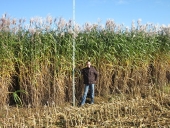Hi,
Every county around here has a spring and fall tree sale. Fruits are in the spring. I just completed this year's order from the Washtenaw County Conservation District. Each year the quality received is better than described. Fruit tree-wise I ordered 4 Black Cherry at 3/4" caliper and 25 each of sets of Chester Blackberry and Prelude Raspberries, for a bit over $200. The berry sets I got last spring fruited the first year!
https://www.washtenawcd.org/2018-tree-sale.html
I am still working on my order for this year to St. Lawrence Nurseries, which specializes in cold-adapted fruits, nuts, and berries. Their shipments have previously been very professional. I am for certain ordering 10 Buartnut and 10 Heartnut, which are new and scarce offerings. In those numbers the Buartnut is $10.50 for a 3-5' tree and the Heartnut are $15 each. These are two new trees for them, and me. This company has many varieties of apples and is the only place that offers Sweet Sap Silver Maples, with 3-5% sap sugar content that are tappable at 8-10 years. These are tempting, but I am 70 🙀
They have quite a few plums and pears, as well.
https://stlawrencenurseries.com/
I also often order from Cold Stream Farms, in Michigan. They have the best prices I have seen for what they carry, but none of it is named variety and that sort of thing. Good selection of native fruit and nuts, but seed grown from wild, so you can't be sure what's going to become of the pretty flowers. If you are looking for fast height, I have some four year old Black Locust from here that are already thirty feet tall, from original 3-4' sticks with roofs. I've put several thousand of their fruit and nut babies in the ground in the last three years: native Apricots, Plums, Persimmon, Hazelnut, and more.
Low prices and steep price breaks at 25 and 100 trees. Any problems I have had with their trees have solely been due to my ordering too many at once and taking too long to get them in place. Example: American Persimmon, 1-2' length, from $5.20 for one to $1.33 each for 100.
https://www.coldstreamfarm.net/
The Missouri Department of Conservation is not fruit or nut oriented, except for acorns, but they have some and, wow, the prices! They are currently out of wild Plum and Paw Paw for this spring, but they have Northern Pecan and other things - at a shocking price of $10 for 25 trees or $3 for 100. Seriously!
https://mdc6.mdc.mo.gov/Applications/TreeSeedling/





